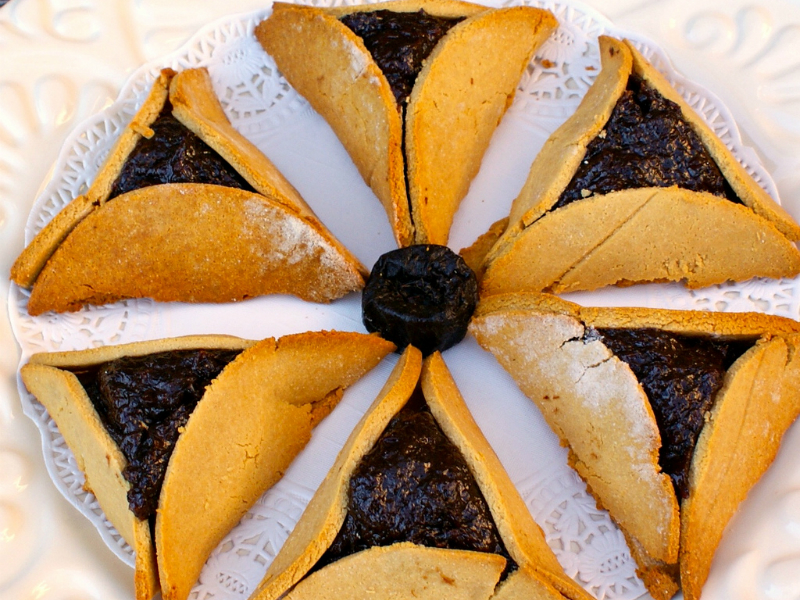Other Purims? Most of us are familiar with the holiday. You know: Achashverosh, Vashti, Haman, Mordechai and Esther. Hanging, happiness and hamantashen. Well it turns out that aside from that tale, there are dozens of other “Purims” out there – both public and very personal.
These Purims can actually be divided into two types: communal Purims, which mark the salvation of a community from impending disaster, and personal Purims, “established by individual families marking their own personal redemptions.”
Why are these holidays named after Purim “and not Pesach or Hanukkah, each of which likewise celebrates Jewish redemption from the designs of our enemies?” asks Rabbi Shlomo Jakobovits. The rabbi points out that Jews are not supposed to rejoice in the downfall of an enemy. We don’t celebrate the death of the Egyptians and there is no mitzvah of feasting and revelry on Hanukkah, but Purim is different. The megillah tells us that Purim’s villain, Haman, is a descendant of Amalek, the tribe said to confront Jews from generation to generation. Just as Jews are commanded to celebrate the defeat of Haman on Purim, communities or families who have defeated their own “Hamans” have proclaimed their own “Purims.”
These Purims transcend time and international borders, and present a fascinating glimpse into the oppression of the Jews – and their salvation:
Purim Vincent: In 1614, baker Vincent (Vintz) Fettmilch organized attacks on the Jews of Frankfurt-am-Main and forced them to leave their city. “After several months, the king of Germany learned that a flagrant injustice had been done to the Jews. He commanded that the baker be killed, his house destroyed, his body beheaded, quartered, and hung on the gates of the city.” The king called on the Jews to return to their homes with full honours. They proclaimed a celebration on the 20th of Adar.
Purim of Sharif (Magistrate): “The city of Tripoli, which contained a large Jewish community, was threatened with extermination when the ruler of Tunis besieged the city. The leader had threatened to kill all the inhabitants of the city. With just one last fortress to conquer, a sudden epidemic spread among his soldiers and he was forced to withdraw with the remains of his army.” The Jews of Tripoli instituted the 24th of Tevet as a Purim.
Purim of Tiberias: In 1743, Governor Suleiman Pasha of Damascus laid siege to the Jewish city along the shores of Lake Kinneret. The Jews weathered the 83 day siege until the Pasha relented, temporarily. While planning his next attack, the Pasha suddenly died. In commemoration, the Jews of Tiberias declared two local Purims: on the 4th of Elul, the date the siege was raised, and on the 7th of Elul, the day the news broke of the Pasha’s death.
Purim of Rhodes: In 1840, the Jewish community of Rhodes were in competition with the local Greek community in the sponge trade. The Jewish community was accused with a blood libel, murdering a child for ritual purposes. After Jews were jailed and tortured, the child was found alive on the island on Syra. The sultan deposed the local governor and presented a royal decree that the charge was false. Special prayers were added annually to the 14th of Adar (Purim day) making it a double Purim commemoration.
Purim Hitler: Observed on the 20th of Kislev, the day the Jews of Casablanca were liberated from the Nazi invaders in 1942. The “Hitler megillah” proclaimed, “And the month which was turned for us from sorrow to rejoicing and the making of holiday and the giving of gifts to the poor. Cursed be Hitler, cursed be Mussolini.”
Sometimes Purims were established following deliverance from a natural disaster:
Purim of Ancona: Celebrated by Greek Jews on the 21st of Tevet to remember severe earthquakes which occurred in that city on that day (Dec. 29, 1690), threatening a great catastrophe. The feast is preceded by a fast and special prayers are ordained for both days.
Purim di Fuoco (“Fire Purim”): Observed by the Jews of Padua on the 11th of Sivan, to commemorate the great conflagration which occurred in that city in 1795. The fire was extinguished through extraordinary efforts on the part of the vice-magistrate.
As to how these Purims are celebrated, observances include:
- A fast day on the day prior to the day of deliverance.
- The writing and reading of a special megillah (scroll) retelling the events leading to the salvation.
- Recital of special liturgical poems and prayers often written in the style of the Al HaNissim (“On account of the miracles”) prayer which recited on Purim and Hanukkah.
- The eating of a festive meal.
- The giving of charity to the poor and sometimes mishloach manot, food gifts as given on Purim.
Sorry, no hamantashen.
Next time, the “Purims” get even more personal as we see how individuals who have experienced miracles have set aside an annual day of thanks for themselves and even for their descendants.







